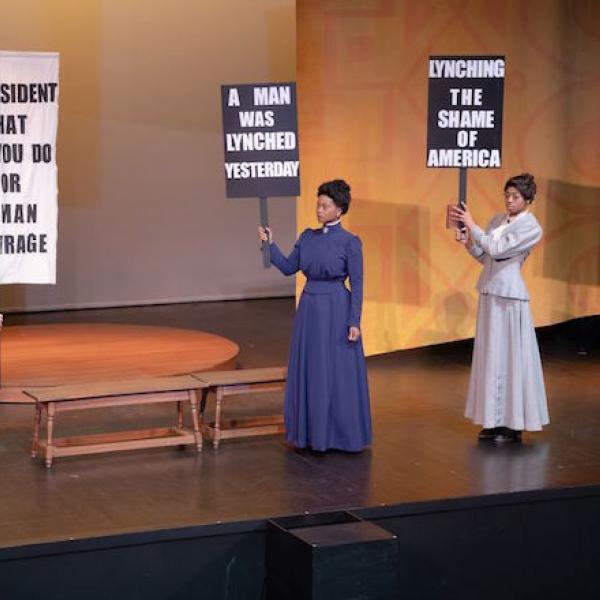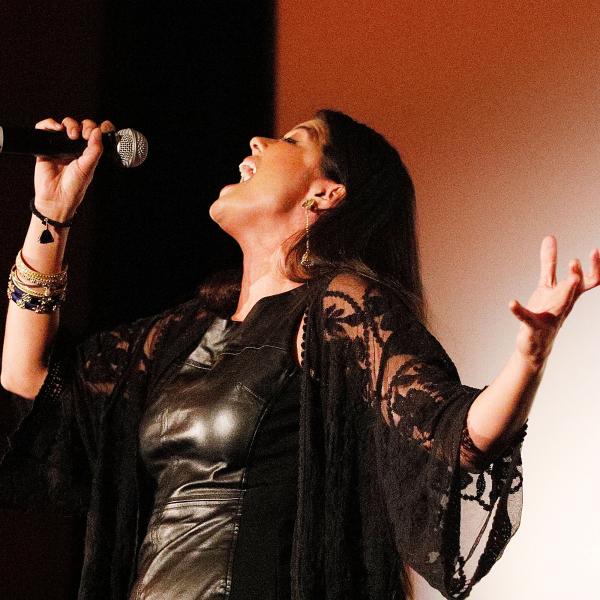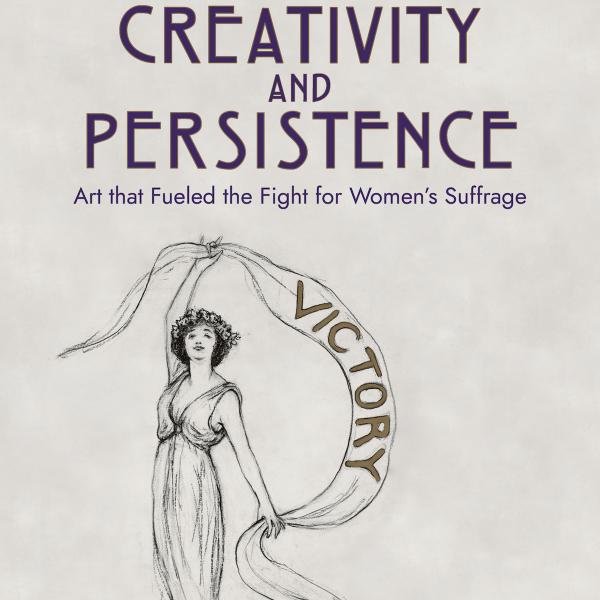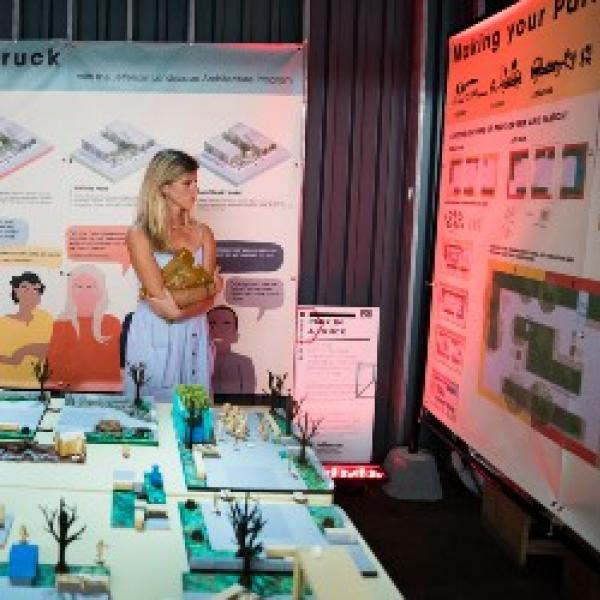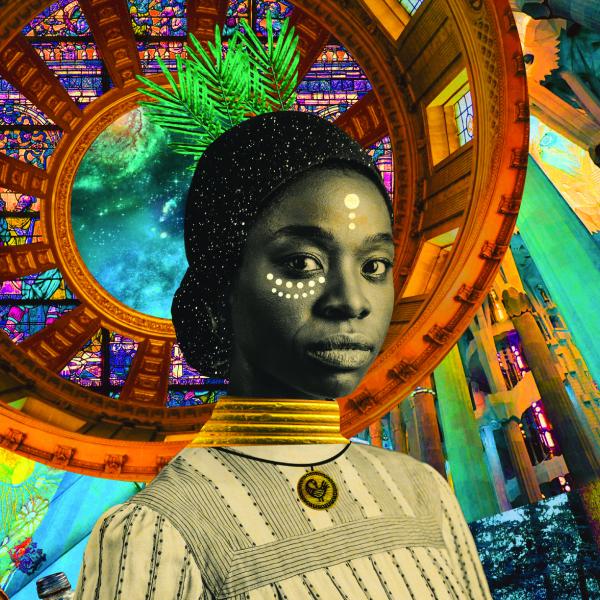Ebbs and Flows
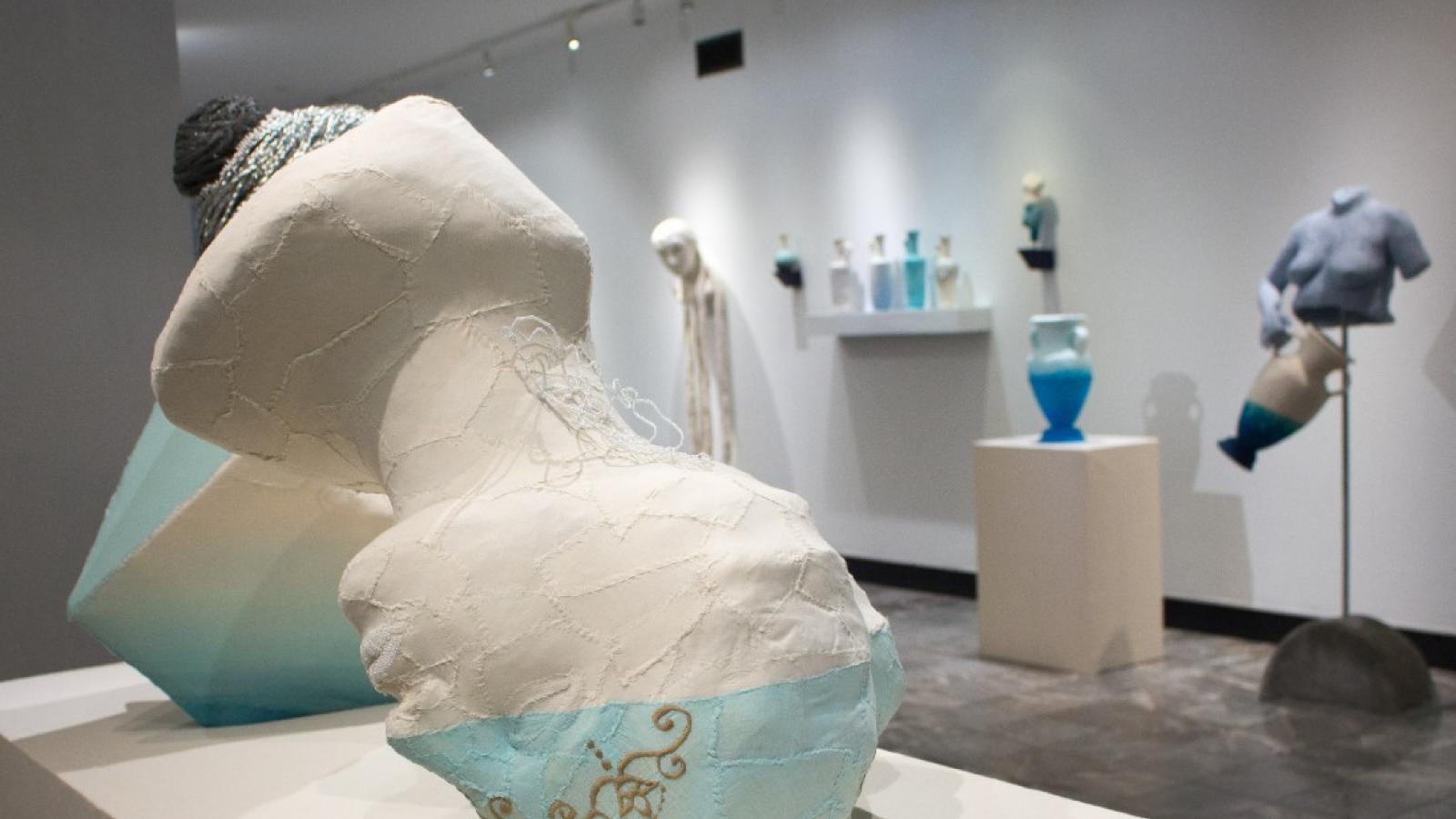
Stepping into the east gallery of Nashville’s Parthenon museum in Centennial Park, you might think you have been transported to an abstract Grecian bathhouse. Surrounded by pedestals and fixtures imitating the architecture of ancient Greece, the deconstructed bathers and overflowing vessels resemble relics dragged up from the depths of the sea. Gradients of pink and blue cover their soft organic forms, reminders of where the water has touched. Inspired by classical literary masterpieces, Grecian design motifs, and coastal living, Flood Lines explores the female experience, both past and present, and the challenges of confronting and conforming to gender expectations.
Featuring the sculptures of artist Tasha Lewis, the exhibition opened on January 24, 2020, and was funded in part by an Art Works grant from the National Endowment for the Arts. The award was part of an agency initiative to support projects honoring the women’s suffrage centennial.
“With suffrage being part of the national conversation this year, [Lewis] was thinking, and we were too, about the idea of the patriarchy,” said Wesley Paine, director of the Parthenon museum. “Though women have come a long way since antiquity and the freedoms they had then versus what women have now, we’re still pushing for equality.”
Lewis’s work promotes equality by challenging patriarchal perspectives and breaking down society’s concepts of ideal beauty. By modeling figures from her own body, Lewis creates sculptures that look like real women, complete with curves and body hair. “I can only really start with thinking about my own body and trying to process my own anxieties and feelings about being a bodied woman,” Lewis said. “Dealing with that physicality and trying to replicate that through my sculptures [leads to] installations that feel open and welcome for people to come in and see themselves in the figures or the classical Greek elements or the hand-sewn elements and be tied to parts of their own female identity.”
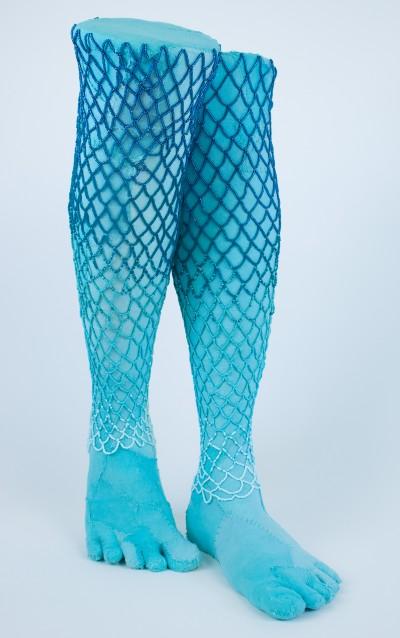
The representation of women in classical Greek sculpture seems to invoke a timeless beauty. Even when sculptures are broken and weathered, they are still regarded as masterpieces. “She has lost arms and the stone has been worn away through time, but we have her up on this pedestal in these museums,” said Lewis, imagining the ancient sculptures of women that have survived through the ages. “I was thinking about that as a reflected mirror for how I feel in our culture as a woman. It’s represented as a kind of resilience and beauty that isn’t an idealized beauty.” The pairing of classical Greek aesthetics with real bodies shows visitors that regardless of societal expectation, women’s bodies have an inherent beauty that should be celebrated.
Lewis’s work not only challenges standards of beauty, but gives women a sense of agency. Her sculptures acknowledge the destructive and disfiguring power of water, while reclaiming this force of nature as a source of liberation from the expectations for women in society. “I was thinking about the new ecosystem that’s revealed when the tide goes out,” said Lewis, in reference to the title, Flood Lines. “I was thinking a lot about hybridity and using fish scales to denote that on my figural forms. They’re like these mermaids or sirens. They play into classical myths of women being these seductive beings, but in my space, they’re very much in control of their own identities and they’re not being written into these stories. They’re actors in their own lives.” This kind of freedom and influence instilled in Lewis’s figures is especially reminiscent of the suffragists, women who paved the way for future generations to be in control of their rights and have their voices heard.
The techniques used in Lewis’s sculptures also share an interesting connection to the suffrage movement and women of the past. Arts such as stitching, beadwork, and dying cloth were historically done by women across many diverse cultures. For Lewis, employing these techniques has allowed her to reflect on the female experience. “It’s connecting to a kind of timeless woman’s handwork that takes skill, but [also] takes labor and time and loving devotion,” she said. She also hopes these techniques might resonate with visitors who might have learned how to cross-stitch or sew from their own mothers or grandmothers. “I want to pay homage to that and highlight that in a contemporary art context,” she said, referring to what she described as “these beautiful lineages of women makers.”
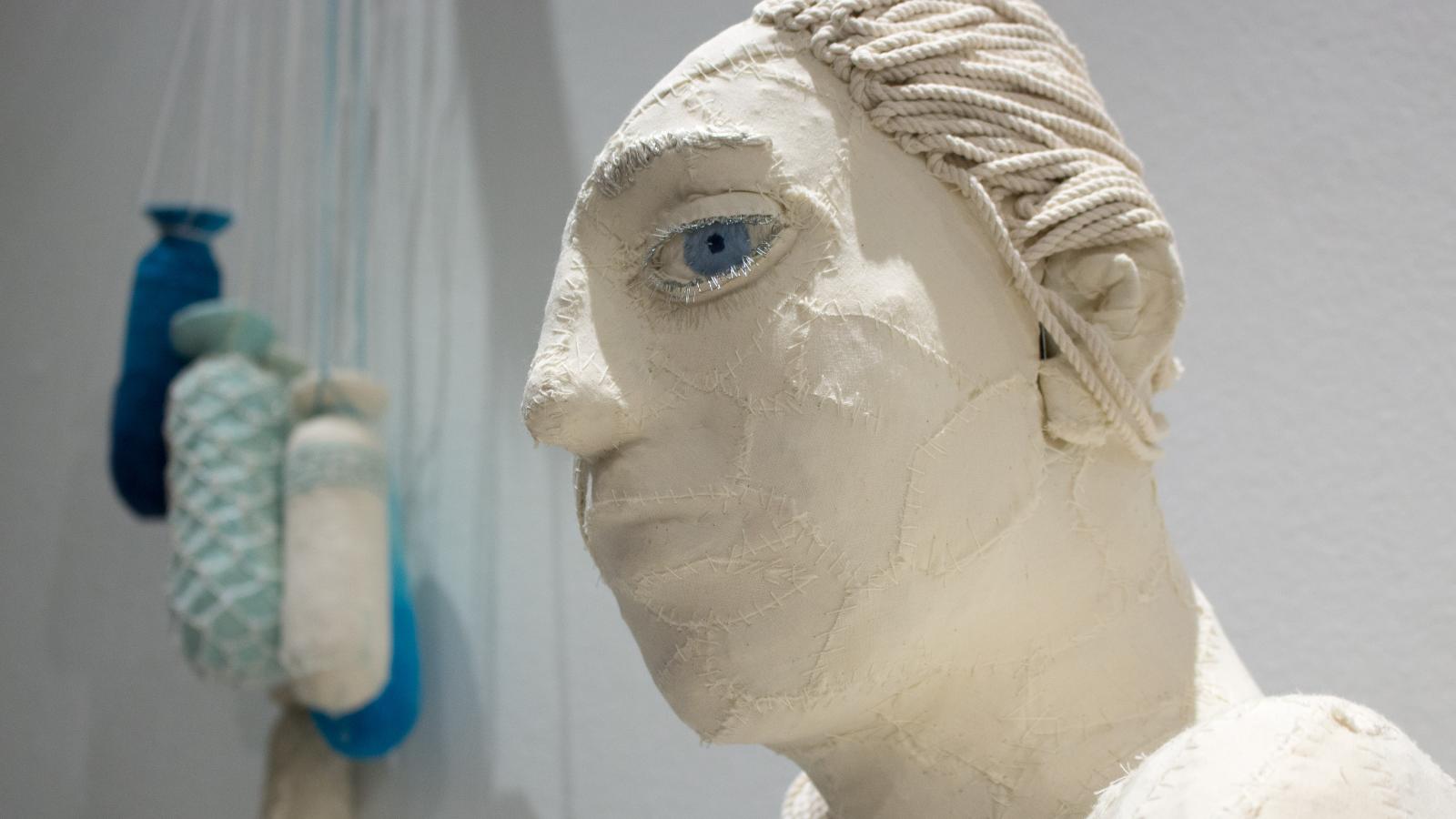
While some of these crafts and their association with women have existed since ancient times, women were expected to continue these activities well into the 20th century. “The beadwork, the art, the hand-workmanship on these is exactly the kind of thing—although very elaborate—that people said, ‘Once women get the vote, they’ll never be at home again. They’ll never do the domestic work that they do now,’” said Paine, in reference to Lewis’s work.
Lewis navigates that tension by challenging societal expectations for women while preserving these art forms. “I think a lot of my work is interested in not just reclaiming the actual craft of doing these things, but really trying to assert that they are very relevant and nuanced art forms,” she said. “I both want to embrace that idea of moving up in society, while also valuing that labor of craft, of textile, of fiber, and showing that they have a place in contemporary society for modern women.”
In conjunction with the exhibit, the Parthenon also offered several museum programs to help visitors further reflect on—and challenge their own perceptions of—women in Ancient Greece, the early 20th century, and today. For younger visitors, the museum developed several programs for an Art Cart that was stationed in the gallery where young people could engage with museum staff about some of the themes in the exhibit. “There was one about Persephone and how she can be considered a queen or a victim, depending on how you read that story,” said Paine. “We wanted people to think about transformation and about women in particular and how the stories from Ancient Greece resonate today.”
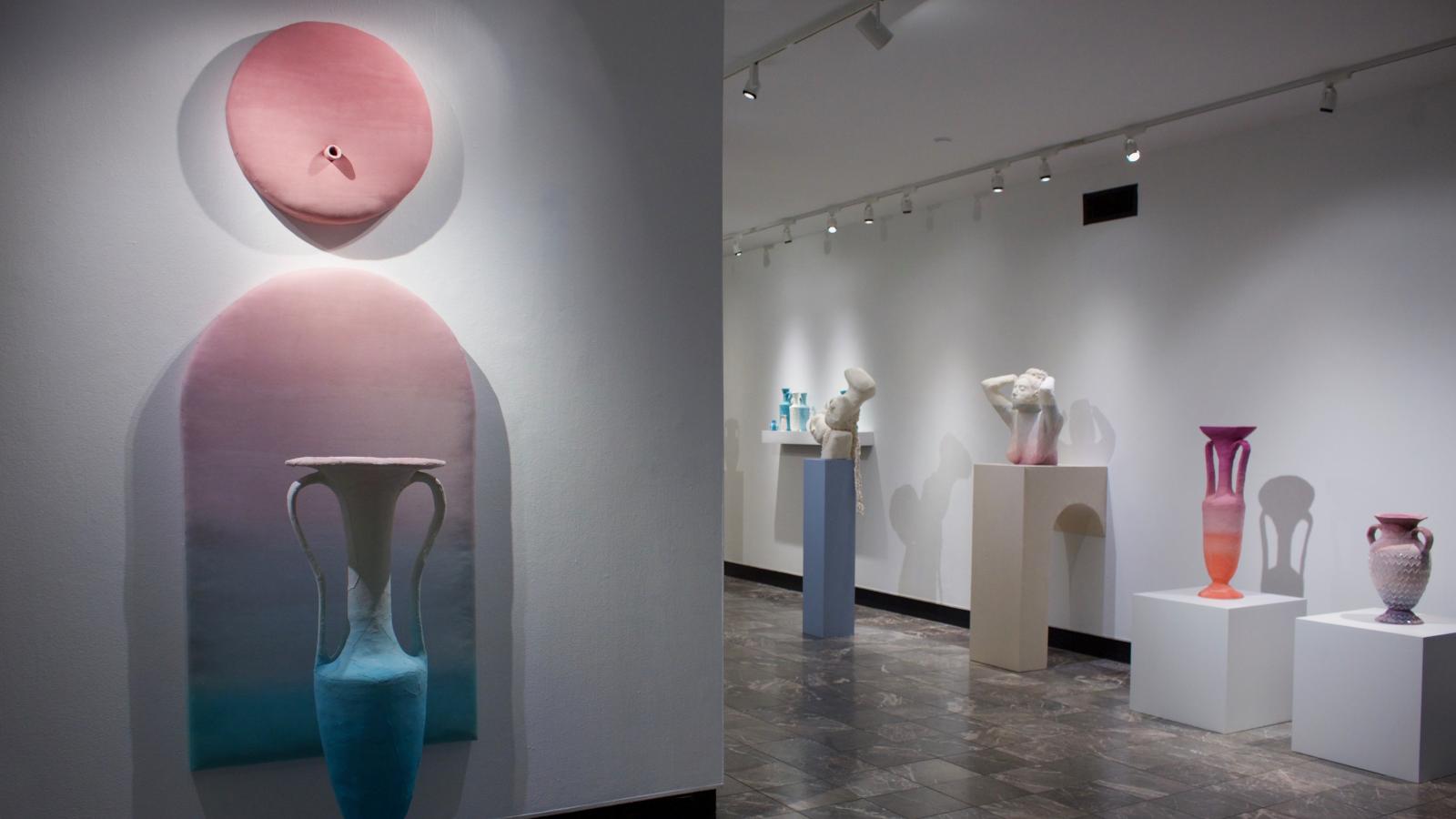
For older audiences, the museum hosted a panel featuring four female speakers, who discussed the freedoms of women from Ancient Greece compared to modern-day Tennessee, with consideration of the civil rights movement and Black suffragists. Flood Lines provided a unique opportunity for the Parthenon to engage visitors in discussing these issues. “That this is so reflective of both 20th-century American history and Ancient Greek history and ties them together is a little unusual,” said Paine, whose own museum is a replica of the Parthenon in Athens, which was constructed in the 5th century BC. “We don’t often run across things that stitch together the antiquity that we represent and contemporary art forms and subjects of national discussion like suffrage.”
Despite the continual progress being made for women’s equality, there is still a ways to go. In two studies of prominent U.S. art museums, it was found that 87 percent of artists represented in permanent collections were male, just 11 percent of new acquisitions were by female artists, and 14 percent of exhibitions showcased women artists. According to the Arts Endowment’s own research, there are also gender disparities in income: female visual artists earned 74 cents for every dollar earned by male visual artists.
But in an increasingly hopeful development, women now account for nearly half of leadership roles at American museums, and make up the majority of other museum administration roles. “I think that the national landscape is changing,” said Paine, of women and the arts. “It’s gradual, but it is changing, as is the national landscape for women in jobs of every description, not just museums and nonprofits.”
Just like the rise and fall of water, progress ebbs and flows as women continue to negotiate their place in society. As positions change like the tide, and the transformations of time are revealed, we come closer to a world of gender equality. “We haven’t achieved it yet,” said Paine, “but we are much farther along than we used to be.”


